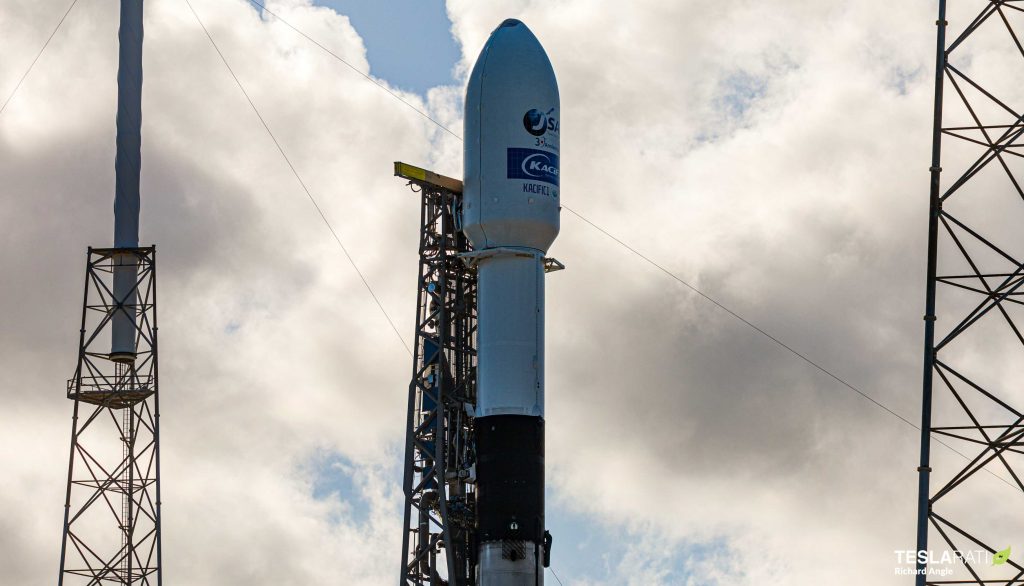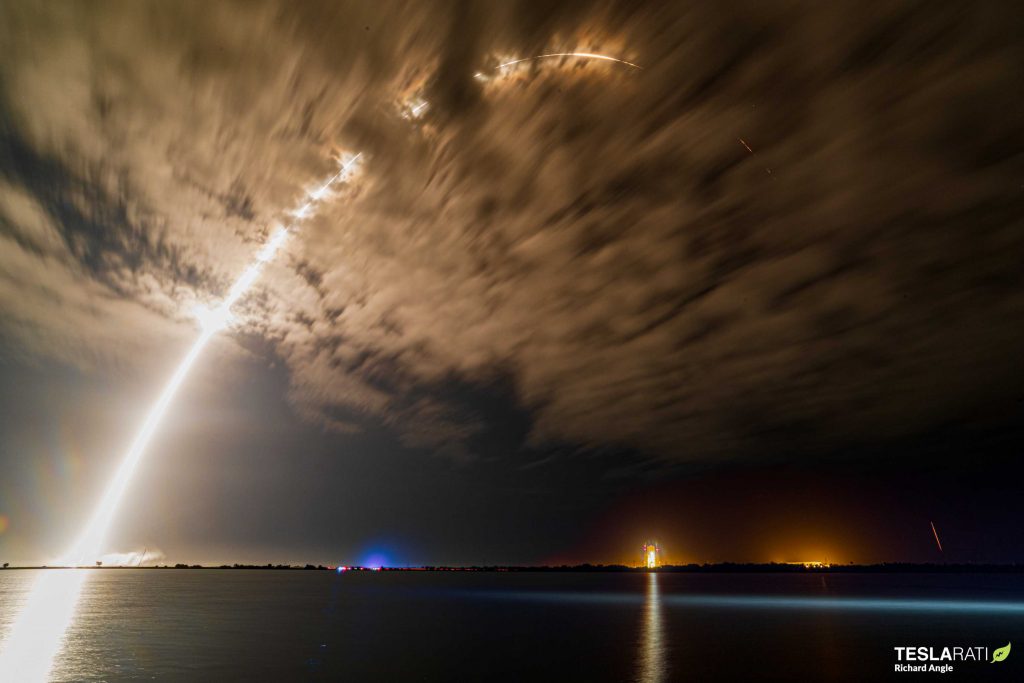SpaceX has successfully launched and landed Falcon 9 once again, sending a massive communications satellite on its way to an operational orbit and recovering booster B1056 aboard drone ship Of Course I Still Love You (OCISLY).
As we speak, Falcon 9’s two payload fairing halves are – if everything went as planned – slowly coasting through the edge of Earth’s atmosphere beneath GPS-guided parafoils, a nearly 40-minute journey from the time they separate from Falcon 9 to the moment they are scheduled to touch down. Stationed hundreds of miles downrange in the Atlantic Ocean, twin recovery ships Ms. Tree and Ms. Chief await with their huge nets taut, ready for the first attempted catch of two fairing halves.
Meanwhile, Falcon 9’s upper stage completed its initial orbital insertion burn, carrying the multi-ton Kacific-1/JCSAT-18 communications satellite to a low Earth parking orbit around 300 km (185 mi). After a 20-minute coast, the upper stage reignited its lone Merlin Vacuum (MVac) engine and burned for more than 50 seconds, raising one end of the spacecraft’s orbit as high as possible in what is known as a geostationary transfer orbit (GTO) insertion.

At least from past performance, Falcon 9 is unable to launch a ~6800 kg (15,000 lb) satellite to a full GTO while still leaving enough propellant for booster recovery, which SpaceX clearly chose to do on this launch. This means that Kacific-1/JCSAT-18 will likely fall several thousand (to ten thousand or more) kilometers/miles short of a full geostationary transfer orbit, where one end of the orbit has actually been boosted to geostationary orbit (36,000 km, 22,000 mi). Using propellant carried aboard the satellite itself, it will make up the difference, raising itself to a full GTO and ultimately circularizing into geostationary orbit, where the Kacific-1/JCSAT-18 can begin serving customers around the world.

Land Falcon 9 booster B1056 certainly did, coming to an eventful stop aboard drone ship OCISLY around nine minutes after lifting off from the coast of Florida. With respect to that liftoff, Teslarati photographer Richard Angle had several remote cameras onsite, so stay tuned for that article in the coming days.
Finally, 33 minutes after launch, Falcon 9’s upper stage – having successfully delivered Kacific-1/JCSAT-18 to what was described as a nominal orbit – deployed the bus-sized spacecraft, officially completing SpaceX’s 13th and likely second-to-last launch of 2019. If all goes well, SpaceX has one final launch scheduled in 2019 – the company’s third 60-satellite Starlink mission.
Catch the full JCSAT-18/Kacific-1 webcast below.
Check out Teslarati’s newsletters for prompt updates, on-the-ground perspectives, and unique glimpses of SpaceX’s rocket launch and recovery processes.

(adsbygoogle = window.adsbygoogle || []).push({});
<!–
–>
var disqus_shortname = «teslarati»;
var disqus_title = «SpaceX nails Falcon 9 landing as fairing halves begin journey back to Earth»;
var disqus_url = «https://www.teslarati.com/spacex-falcon-9-landing-fairing-halves-journey-to-earth/»;
var disqus_identifier = «teslarati-123573»;

